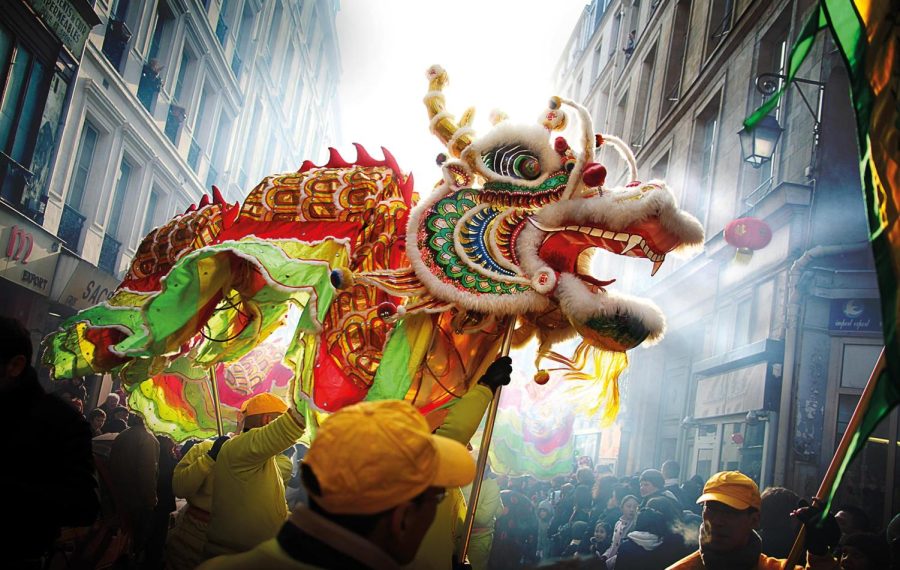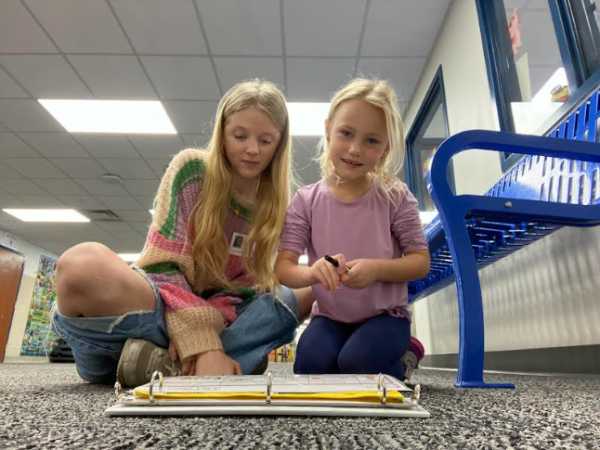The Unknown Origins of New Years Eve
The History Behind One of the Biggest Celebrations of the Year
The dragon dance signals the start to the celebration of the Chinese Lunar New Year.
New Year’s celebrations have been prominent for hundreds of thousands of years. Across the globe, different countries celebrate the special day with culturally significant celebrations. Having been celebrated for at least four thousand years, the festivity tends to begin on the eve of the New Year, Dec. 31, and can last into the next day, Jan. 1, according to Britannica.
“On New Year’s Eve, I had to work from 4pm -10 pm which was a bummer. Usually, I spend New Year’s on vacation with family, or stay home and celebrate with friends,” Orono High School senior Sydney Heckmann said.
New Year’s traditions in the US vary from those celebrated, say, in China or India. According to the editors from History.com, the earliest celebrations on record began about 4,000 years ago in ancient Babylon. Babylonians marked the first new moon following the vernal equinox as the start of a new year. The vernal equinox is a day typically in late March that depicts an equal amount of sunlight and darkness.
Babylonians’ celebrations consisted of a religious 11-day festival called Atiku. During the days of the festival, different rituals were celebrated. The festival brought to light the victory of the mythical sky god, Marduk over Tiamat, the evil sea goddess. This mythical celebration reflected a significant political purpose. During this period of time, the crowning of a new king took place, or, the divine mandate of the current ruler was “symbolically renewed”, according to History.com editors.
In modern-day, some traditions include making a toast with music, watching the ball drop in Times Square (New York), and creating New Year’s resolutions, according to the U.S. Department of State.
“In Chinese class, we learned about the different Chinese New Year’s traditions. Everyone usually wears red, and there is a tradition of banging pots and pans to scare the dragons away. Typically in class, we eat cultural Chinese food and create a slideshow that depicts details about the Chinese New Year,” senior Kate McGrann said.
According to an article from EBSCO, a special dragon dance marks the start of the Chinese Lunar New Year. Also known as the Spring Festival, the celebration is known as the most important festival in China for family reunions. There are 12 animal zodiac signs that represent the 12-year lunar cycle. The signs, in order, are: rat, ox, tiger, rabbit, dragon, snake, horse, goat, monkey, rooster, dog, and pig. Each animal depicts a different personality trait.
Corresponding to the order above, some of the traits are as follows: kind, determined, brave, quiet, confident, intelligent, energetic, calm, curious, hardworking, honest, and generous, according to the Management Development Institute of Singapore.
Compared to teens and the younger generation, adults and those with children celebrate the New Year differently, but still manage to make the most out of the holiday.
“Having New Year’s with a child can be very complicated. Easton [my son] is three years old, and isn’t really able to understand the concept of the holiday. But we still take time to celebrate with family which is always fun as well,” OHS English teacher Mrs. Ivers said.
According to editors from History.com, around Oct. and Nov. of every year, Hindus celebrate the tradition of Diwali – a celebration of lights dating back to more than 2,500 years ago. Lasting five days, Diwali marks the biggest holiday of the year. A long-lasting celebration, this tradition is known for its multiple stories in religious texts – many about the overcomings of good and evil.
Different parts of India celebrate Diwali in their own way. In northern India, the tale associated with King Rama and the god Vishu is told. The story goes that when an evil king in Lanka (Sri Lanka) captures Rama’s wife, he creates an “army of monkeys” to save her, according to Pankaj Jain, professor of anthropology, philosophy, and religion at the University of North Texas.
Jain continues to explain the story with the invasion of Rama and his monkeys leading to the killing of the captor and the rescue of Rama’s wife. To welcome them home, tons of lights are spread across the city back north, celebrating their return. This started the tradition of lighting lamps to celebrate Diwali.
In the south of India, their story talks about the Hindu god, Krishna and his successful attempt to rescue some 16,000 women from an evil king. In other parts of India, celebrations include the exchanging of gifts and coins, according to History.com editors.
Diwali celebrations and traditions are also used by other religions such as Buddhism, Jainism, and Sikhism, to celebrate their own historical events. While Diwali is known as a religious holiday, it also can be seen as a national holiday in India, according to Jain.

Hi! I'm Delaney Whitney. This is my second year on The Spartan Speaks and I am currently an Editor in Chief. Additionally to the Spartan Speaks, I am a...











